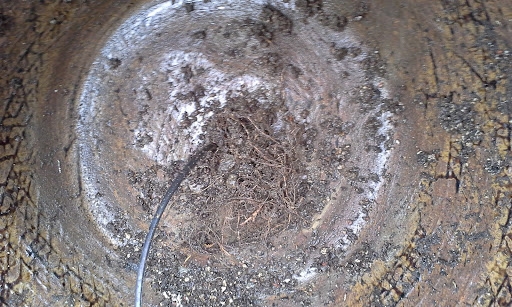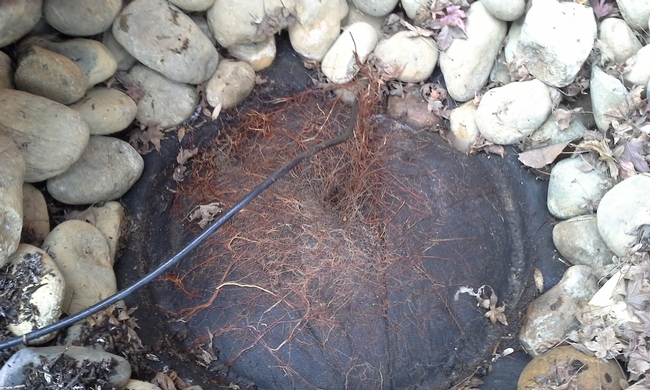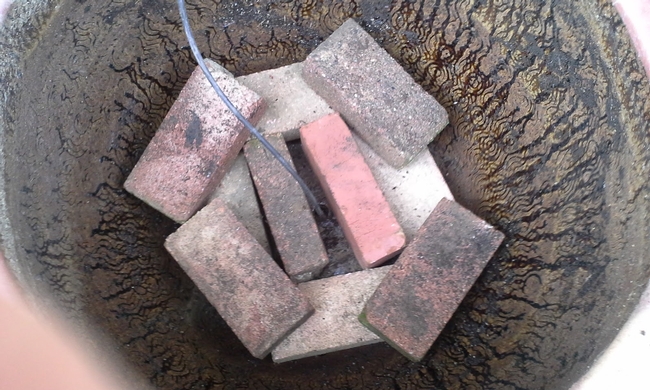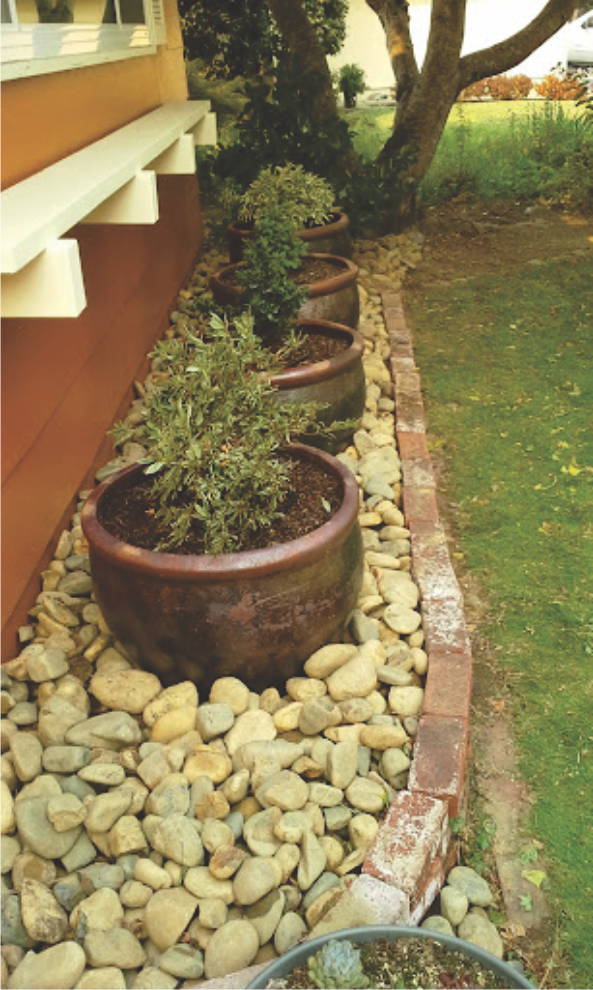by Melody Kendall
We have lived in our home now for almost 40 years; gosh, time flies when you are having fun! Until about five years ago we had been unsuccessful in establishing a garden in the front yard under the only window seen from the street, wanting it to be a major design feature of our home. About every three years we had to totally rip out the languishing current garden incarnation and start over. As a busy young family we dealt with it, but it sure became boring, tiring and just plain frustrating.
Five years ago we entered our retirement years, began an uncluttered lifestyle and had more free time. We decided to tackle this problem area head on. First, we had to discover what was causing anything we planted in this area to decline and eventually die. So, thinking that the soil was the culprit, we planned to dig out all the soil in the 4 foot wide by 20 foot long area to about 8 inches. Right away the mystery was solved. Oh my goodness, the entire area was literally clogged with clumps of hair like roots. My husband likened it to hairballs that are usually found when unclogging a drain in bathroom sinks. Removing the soil required the use of sharp bladed tools and a lot of back-breaking work. We used a hoe to chop and a shovel to stand on to cut through the wads of compacted roots. These humongous root masses filled an entire large yard waste container. After we removed all the root material there was only about a quarter of the soil remaining, mostly because the root masses were so compacted no amount of pounding or chopping could break them up enough to release contained soil. Okay, we had planned on replacing the soil anyway.
Now we know why plants in this area didn't thrive. Those roots were taking all the nutrients and water and the poor vegetation was literally being starved out. Where were these roots coming from? We have some absolutely lovely Japanese maples (Acer palmatum) all around the circumference of our front garden area, and I guess they didn't want to share the space with any other plants. Because the garden bed area was regularly watered and fertilized, those lovely Maples turned into very nasty neighbors, sending thieving roots into the bed to leach all that tasty food and water from the helpless tiny plantings. With research we found that this is perfectly normal behavior and to not judge the trees too harshly. Since we didn't water or feed the trees, why wouldn't they seek out an easy meal nearby? So, short of removing the trees, which was not an option, how could we create a garden area in this space?
We went on a hunt for information and helpful advice on this problem. The best info we could come up with said exclusion was the best method to avoid this root ‘hairball' situation. So we lined the excavated garden bed with two layers of a permeable weed cloth. The permeability will make sure the garden area is still drained properly so plastic is not recommended. We read that because the weed cloth is intended to be left in place, it's not recommended for vegetable gardens or annual flower beds.
We had intended to replace the soil and replant but we had a brainstorm and thought why not create another layer of exclusion and decided to purchase large planters to put the plants in. We placed these directly on the weed cloth, laid irrigation lines and surrounded them with large cobbles to match the rest of the landscape.
We then filled the planters with fresh soil and, based on the mostly shaded location, put in 5 Azaleas Rhododendron spp. and we were done. NOT!
Two years ago I noticed that the azaleas were looking pekid and when I walked over the pots were full of water. I was not a happy camper. I decided to take one of the azaleas out of the pot and see what the problem was, quite a chore by itself. Bending over while gently removing the soil around a shrub, trying not to spill onto the cobbles and/or the adjacent lawn was a nightmare. Finally, I was able to disinter the shrub and put it temporarily into another area of the yard. This way the roots would not dry out until I could put it back into the pot. Once all the soil was removed I found out just how insidious those pesky tree roots were. They had not only come through the two layers of weed cloth but had totally clogged the drain hole in their enthusiasm for the water and nutrients in the pot.
So now what!? I was a woman on a mission. I reread all the old information on excluding tree roots from planters and found some new recent information and decided what I needed was an air gap. When planting a shrub in the soil it is always suggested that, once the plant is in the ground, you add water and gently tamp down the new soil around the plant to remove any large air gaps. This means to me that large air gaps are not a good thing for roots. So, if I deliberately created a large air gap between the tree roots and the planter this just might be the answer.
After removing all the soil from each of the five planters, which took a week and much back liniment, I was ready to put my theory to the test. I tore out those cheeky roots, relined the area under each pot with new weed cloth and created a three inch base out of bricks that the pots could stand on. I now had a large air gap. As I am not getting any younger and certainly don't want to do this again, I went one step further. I created a brick base in the bottom of each pot and put a layer of weed cloth on top of the bricks to create a second large air gap. I finished up by purchasing cloth planter bags to sit on that base. Now there were two complete large air gaps. The reconstruction was accomplished and we were ready for the test of time. Two years have gone by and the Azaleas seem to be thriving and the pots draining nicely. I think my plan is working… fingers crossed
Napa Master Gardeners are available to answer garden questions by email: mastergardeners@countyofnapa.org. or phone at 707-253-4143. Volunteers will get back to you after they research answers to your questions.
Visit our website: napamg.ucanr.edu to find answers to all of your horticultural questions.
Photo credits: Mel Kendall
Information links:
Morton Arboretum-tree root problems
https://mortonarb.org/plant-and-protect/tree-plant-care/plant-care-resources/tree-root-problems/#!
UC IPM
Maple http://ipm.ucanr.edu/PMG/GARDEN/PLANTS/maple.html
Azalea http://ipm.ucanr.edu/PMG/GARDEN/PLANTS/azalea.html
UC ANR-Solano UCMG-correct planting http://solanomg.ucanr.edu/files/246185.pdf




